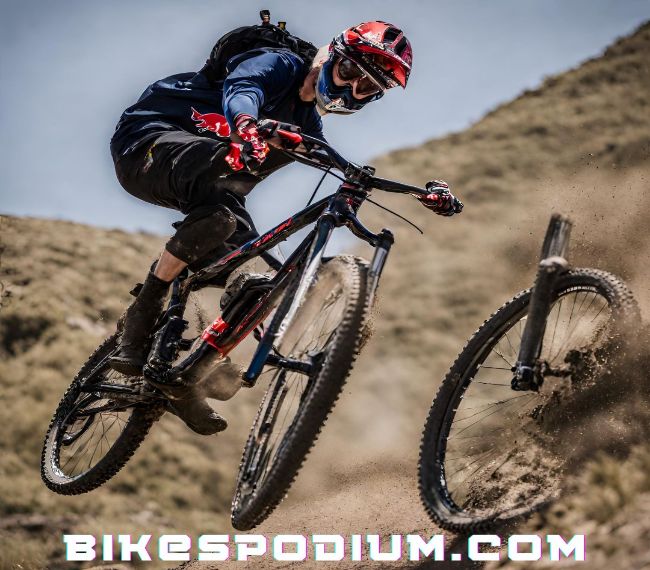A road bike can go 10 to 30% faster than a mountain bike, and when both are ridden with the same effort on smooth, paved roads, the road bike is usually 15% faster on average.
When it comes to choosing between a road bike and a mountain bike, speed is often a crucial factor to consider.
Both types of bicycles have their own unique characteristics that can significantly impact their speed and performance.
In this article, we will delve into the differences between road bikes and mountain bikes and explore the reasons behind their varying speeds.
Understanding Road Bikes
Road bikes are specifically designed for riding on paved roads and surfaces, with a primary focus on speed, efficiency, and smoothness. These bikes typically feature lightweight frames, narrow tires, and drop handlebars. Let’s take a closer look at the factors that contribute to their speed:
1. Aerodynamics
One of the key reasons road bikes are faster than mountain bikes is their superior aerodynamics. Road bikes are built with streamlined frames and components, allowing them to slice through the air with minimal resistance. The sleek design reduces wind drag, enabling riders to maintain higher speeds for longer periods.
Additionally, road bikes often have aerodynamic features such as teardrop-shaped tubes and internal cable routing, further reducing drag. These design elements make road bikes more efficient in cutting through the air, allowing riders to achieve greater speeds.
2. Lightweight Construction
Road bikes are constructed using lightweight materials such as carbon fiber or aluminum. This lightweight design enhances their acceleration and overall speed. The reduced weight allows riders to exert less effort when pedaling, enabling them to achieve higher speeds more easily.
Furthermore, the lightweight construction of road bikes enables quick maneuvering. Riders can change directions and navigate corners with agility, adding to their overall speed and performance.
3. Thin Tires
Road bikes feature narrow and smooth tires, designed for optimal speed on paved surfaces. These tires have less rolling resistance compared to the wider and knobby tires found on mountain bikes. The reduced resistance enables road bikes to glide effortlessly, resulting in faster speeds.
Moreover, the narrower tires of road bikes provide a smaller contact patch with the road, reducing friction and increasing efficiency. This, in turn, allows riders to maintain higher speeds and conserve energy while pedaling.
4. Riding Position
The riding position on a road bike is more aggressive compared to a mountain bike. The drop handlebars and forward-leaning posture allow riders to achieve a more aerodynamic position, minimizing wind resistance. This positioning ensures maximum power transfer to the pedals, further enhancing the bike’s speed potential.
By adopting a more aerodynamic riding position, riders can reduce their frontal area and present a smaller profile to the wind. This leads to improved efficiency and increased speed, as the rider encounters less wind resistance.
Examining Mountain Bikes
Mountain bikes, on the other hand, are designed to tackle rough terrains, off-road trails, and steep inclines. Their focus is on stability, durability, and versatility. While they may not match the speed of road bikes, mountain bikes offer several advantages in challenging environments:
1. Suspension System
Mountain bikes are equipped with robust suspension systems that absorb shocks and impacts from uneven terrains. These systems enhance rider comfort and control while traversing bumpy surfaces. However, the suspension can absorb some of the energy that would have otherwise been transferred to the pedals, slightly reducing speed.
The suspension system of mountain bikes allows riders to maintain better control and stability on rough terrains. It helps to absorb the impact of bumps and obstacles, preventing excessive jolts that could hinder speed. While it may slightly affect speed due to energy absorption, the enhanced comfort and control compensate for this trade-off.
2. Traction and Grip
Mountain bikes feature wider and knobby tires, specifically designed to provide superior traction on off-road trails. The increased tire width and aggressive tread patterns enable riders to conquer challenging terrains. However, the wider tires create more rolling resistance, which can hinder overall speed on paved surfaces.
The wider and knobby tires of mountain bikes offer exceptional grip and traction on loose or uneven surfaces. This allows riders to confidently navigate through dirt, gravel, and mud without losing control. Although the increased rolling resistance affects speed on smooth surfaces, the enhanced traction and grip are crucial for off-road adventures.
3. Durability
Mountain bikes are constructed with durability in mind. They have sturdier frames, stronger components, and increased impact resistance compared to road bikes. This robust construction allows mountain bikes to withstand the rigors of off-road riding but can contribute to their overall weight, potentially affecting speed.
The durability of mountain bikes ensures they can withstand the demands of rough terrains and challenging conditions. The sturdier frames and components provide stability and longevity, allowing riders to tackle various obstacles without worrying about damage. However, the increased weight resulting from the robust construction may slightly affect speed on flat surfaces.
4. Versatility
Unlike road bikes, mountain bikes offer greater versatility in terms of terrain and riding conditions. They can handle steep climbs, descents, and unpredictable trails with ease. This adaptability comes at the expense of pure speed on smooth surfaces but is invaluable for riders seeking adventure beyond paved roads.
Mountain bikes excel in diverse environments, making them suitable for riders who enjoy exploring off-road trails, mountains, and forests. They offer the ability to conquer challenging terrains and navigate through obstacles that would be impossible on a road bike. While they may not match road bikes in terms of pure speed, their versatility and adaptability make them an excellent choice for adventurous riders.
The Verdict
In the battle of speed between road bikes and mountain bikes, it is clear that road bikes have the upper hand. Their aerodynamic design, lightweight construction, thin tires, and aggressive riding position make them the ideal choice for those seeking pure speed on smooth surfaces.
However, it is essential to consider your personal preferences, intended usage, and the terrain you plan to ride on. If you prioritize versatility, durability, and tackling off-road trails, then a mountain bike may be the better option, despite its slightly lower speed capabilities.
Ultimately, choosing between a road bike and a mountain bike boils down to your specific needs and desired riding experience. Regardless of your choice, both types of bicycles offer unique benefits and can provide immense enjoyment for riders of all skill levels.
FAQ
Q: Why are road bikes faster than mountain bikes?
A: Road bikes are faster than mountain bikes due to their superior aerodynamics, lightweight construction, thin tires, and aggressive riding position.
Q: What contributes to the speed of road bikes?
A: The speed of road bikes is influenced by factors such as their aerodynamic design, lightweight construction, thin tires, and aggressive riding position.
Q: Why do mountain bikes have wider tires?
A: Mountain bikes have wider tires to provide superior traction on off-road trails, but these wider tires create more rolling resistance, which can affect speed on paved surfaces.
Q: What advantages do mountain bikes have over road bikes?
A: Mountain bikes offer advantages such as a suspension system for better control on rough terrains, superior traction and grip on off-road trails, durability for withstanding challenging conditions, and versatility in handling various terrains.



